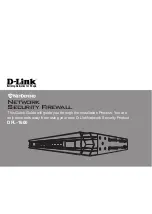
28. ROX™ Routing Overview
ROX™ v2.2 User Guide
288
RuggedBackbone™ RX5000
Continuing with the example above, an IP interface with the name Switch.0100 is created when you
create VLAN 100. Providing an IP address to this interface makes the ROX™ system accessible to
the devices on VLAN 100. For example, assigning Switch.0100 the IP address 192.168.100.10/24
makes the ROX™ device accessible to the devices attached to lm1/1, lm1/2, and lm1/5. Note that all
IP addresses belong to the same subnet.
Figure 28.2. VLAN connected to ROX device through switch.0100
If the ROX™ device is to be used as a router to route between all attached networks, switch ports can
be made to behave liks a routed port. For more information, see
Section 28.3.2, “Routing IP Packets”
.
28.3.2. Routing IP Packets
When the devices belonging to VLAN 100 need to reach another network, they can use Switch.0100 as
the gateway. At that point, the ROX™ device routes the traffic. If the traffic volume to be routed is high
enough, then Layer 3 switching will start (provided that this feature is available). Note that the devices
attached to lm1/1, lm1/2, and lm1/5 must use Switch.0100’s IP address as the gateway.
Routed Ports
To make a particular port behave like a router port, do the following:
• disable the spanning tree protocol on the port.
• assign the port to a unique VLAN.
• assign the VLAN interface an IP address.
The VLAN is still an isolated LAN segment with an IP address, but it has only one physical port attached;
thus, the port will behave as if it is a router port. For example, if the port lm2/3 belongs to VLAN 1760
and no other port belongs to that VLAN on the local system, then Switch.1760 can be directly reached
only through lm2/3, and thus behaves as a router port.
Note that the port still belongs to a VLAN. If the port has to behave like a router interface, it should be
configured as a VLAN edge port. Also note that trunk ports, by definition, belong to all VLANs, unless
they are specifically configured otherwise.
















































